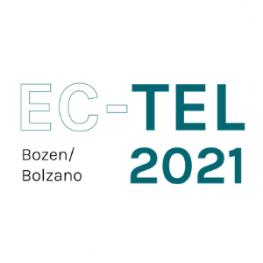Speakers
Mohammed Saqr
KTH Royal Institute of Technology, SwedenMaria Aristeidou
The Open University, UKAmal Ben Soussia
LORIA, Université de Lorraine, FranceStart
22/09/2021 - 11:00
End
22/09/2021 - 12:30
Address
Zoom Room 2 @ EC-TEL Gather Town View mapPaper Session 2: Engagement, Retention, and Motivation
Chair:  Maren Scheffel
Maren Scheffel
The Dire Cost of Early Disengagement: A Four-Year Learning Analytics Study over a Full Program
Mohammed Saqr[1,2] and Sonsoles López-Pernas[3,2] [1] KTH Royal Institute of Technology, Sweden [2] University of Eastern Finland, Finland [3] Universidad Politécnica de Madrid, Spain
Abstract: Research on online engagement is abundant. However, most of the available studies have focused on a single course. Therefore, little is known about how students’ online engagement evolves over time. Previous research in face-to-face settings has shown that early disengagement has negative consequences on students’ academic achievement and graduation rates. This study examines the longitudinal trajectory of students’ online engagement throughout a complete college degree. The study followed 99 students over 4 years of college education including all their course data (15 courses and 1383 course enrollments). Students’ engagement states for each course enrollment were identified through Latent Class Analysis (LCA). Students who were not engaged at least one course in the first term was labeled as “Early Disengagement”, whereas the remaining students were labeled as “Early Engagement”. The two groups of students were analyzed using sequence pattern mining methods. The stability (persistence of the engagement state), transition (ascending to a higher engagement state or descending to a lower state), and typology of each group trajectory of engagement are described in this study. Our results show that early disengagement is linked to higher rates of dropout, lower scores, and lower graduation rates whereas early engagement is relatively stable. Our findings indicate that it is critical to proactively address early disengagement during a program, watch the alarming signs such as presence of disengagement during the first courses, declining engagement along the program, or history of frequent disengagement states.
📄 Read More: https://link.springer.com/chapter/10.1007/978-3-030-86436-1_10
First-Year University Students in Distance Learning: Motivations and Early Experiences
Maria Aristeidou Institute of Educational Technology, The Open University, UK
Abstract: Acquiring new learning and assessment styles, maintaining old and creating new relationships, and learning how to function as independent adults are some of the stressors that first-year university students face. Yet, we know little about the transition of students from school/college to distance learning higher education. This study drew from survey responses of 377 first-year students, aged 18-19, at The Open University, UK. This study aimed to explore the motivations of students who join distance learning universities and to examine their early experiences. Findings showed that the main motivations for joining distance learning higher education include flexible study alongside other commitments, earning money alongside their studies, and demonstrating self-motivation. Motivations for joining were significantly different among various student groups. Further, the decision of 22% of the respondents to study via distance learning was impacted by the Covid-19 pandemic. ‘Course structure’ was identified as the factor that supported them the most with their transition from school/college to a distance learning university, while ‘interactions with students’ was identified as the main area of suggested improvement. This study has gone some way towards enhancing our understanding of the expectations and needs of first-year distance learning students. The present findings have important implications for designing suitable transition and support networks in the distance and online learning environments.
📄 Read More: https://link.springer.com/chapter/10.1007/978-3-030-86436-1_9
An In-Depth Methodology to Predict At-Risk Learners
Amal Ben Soussia, Azim Roussanaly and Anne Boyer Lorraine University, France
Abstract: Nowadays, the concept of education for all is gaining momentum thanks to the widespread use of e-learning systems around the world. The use of e-learning systems consists in providing learning content via the Internet to physically dispersed learners. The main challenge in this regard is the high fail rate particularly among k-12 learners who are our case study. Therefore, we established an in-depth methodology based on machine learning models whose objectives are the early prediction of at-risk learners and the diagnosis of learning problems. Going through this methodology was of a great importance thus it starts by identifying the most relevant learning indicators among performance, engagement, regularity and reactivity. Then, based on these indicators, we extract and select the adequate learning features. For the modeling part of this methodology, we apply machine learning models among k-nearest neighbors (K-nn), Support Vector Machine (SVM), Random Forest and Decision tree on a real data sample of 1361 k-12 learners. The evaluation step consists in comparing the ability of each model to correctly identify the class of learners at-risk of failure using both accuracy and False Positive Rate (FPR) measures.
📄 Read More: https://link.springer.com/chapter/10.1007/978-3-030-86436-1_15



